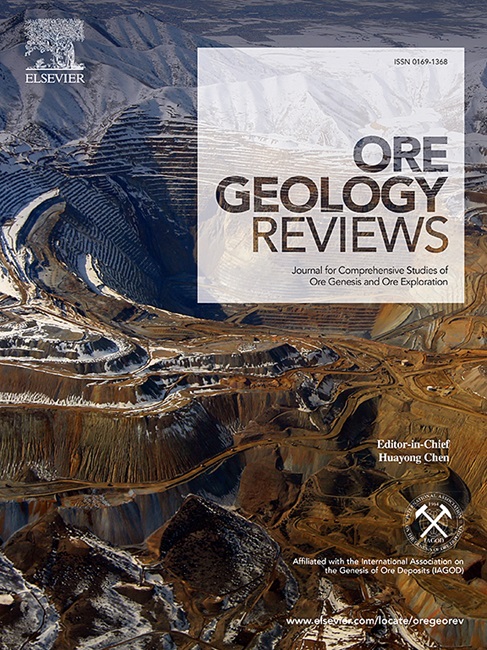Multi-geochronological methods unveiling a Jurassic metamorphic event in Jiaodong Peninsula and its implication for regional mineralization in the NW Pacific
IF 3.2
2区 地球科学
Q1 GEOLOGY
引用次数: 0
Abstract
The subduction of the Paleo-Pacific Plate during the Jurassic period set in motion a complex interplay of geological processes, collectively recognized as the Yanshan Movement. While previous studies have focused primarily on magmatism and deformation, the role of metamorphic events and their influence on gold mineralization has been largely overlooked. This paper addresses this gap by using monazite, titanite, and zircon dating to uncover Jurassic metamorphic details from rocks of the Jingshan Group which hosts numerous quartz vein-type gold deposits within and along a series of major, kilometre-scale NNE-SSW vertical faults. Through precise age dating, we identified two distinct phases of Jurassic metamorphism: the Early-Middle Jurassic (198–170 Ma) and the Late Jurassic (156–142 Ma). A mapped 156 Ma thrust fault, characterized by a syn-tectonic vein, corresponds with the second phase of metamorphism, and underscores the interconnected nature of deformation and metamorphism during the Yanshan Movement. In addition, widespread Jurassic magmatism, associated with gold deposits, points to partial melting of the thickened North China Craton crust, driven by the subduction of the Paleo-Pacific plate. These findings suggest that Jurassic metamorphism, in combination with concurrent deformation and magmatism, potentially played a key role in the formation of the Jiaodong gold deposits. Subduction-induced crustal thickening facilitated contemporaneous deformation, magmatism, and metamorphism, which in turn promoted the generation of metamorphic fluids and provided pathways for gold-bearing fluids, contributing to the region’s rich gold mineralization.

求助全文
约1分钟内获得全文
求助全文
来源期刊

Ore Geology Reviews
地学-地质学
CiteScore
6.50
自引率
27.30%
发文量
546
审稿时长
22.9 weeks
期刊介绍:
Ore Geology Reviews aims to familiarize all earth scientists with recent advances in a number of interconnected disciplines related to the study of, and search for, ore deposits. The reviews range from brief to longer contributions, but the journal preferentially publishes manuscripts that fill the niche between the commonly shorter journal articles and the comprehensive book coverages, and thus has a special appeal to many authors and readers.
 求助内容:
求助内容: 应助结果提醒方式:
应助结果提醒方式:


